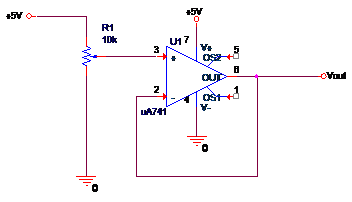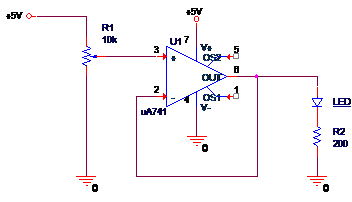Hello all,
I'm designing a DC power supply and am currently prototyping with a UA741 op amp. I put together a variable voltage follower circuit, with the op amp, in hopes of creating constant voltage source. Without a load (Diagram 1) it operates as expected; the output voltage gets close to the top rail but not so close to the bottom rail. However when I set the non-inverting input to 5V and put a load on the output (Diagram 2) there is a large voltage drop between the non-inverting input and output; about 1.4V. This isn't the behavior I expected. I thought the idea of an op amp was that it will supply the necessary output current to keep the input voltage differential close to zero. Could it be that this op amp simply isn't good enough for this type of application? Where am I going wrong?
Diagram 1:
Diagram 2:



